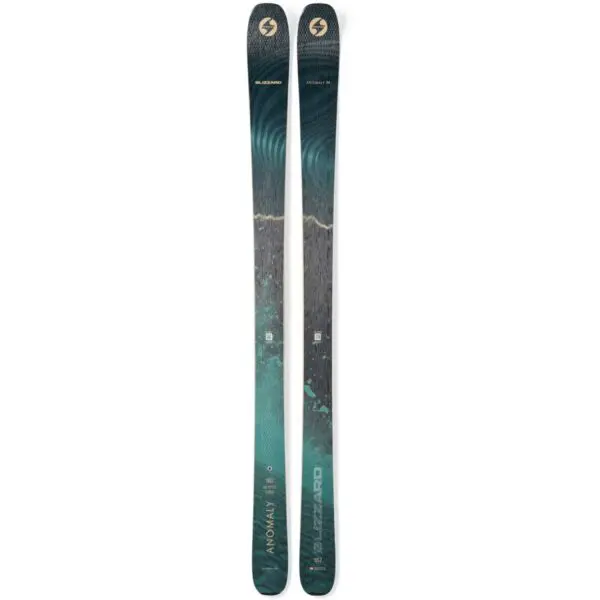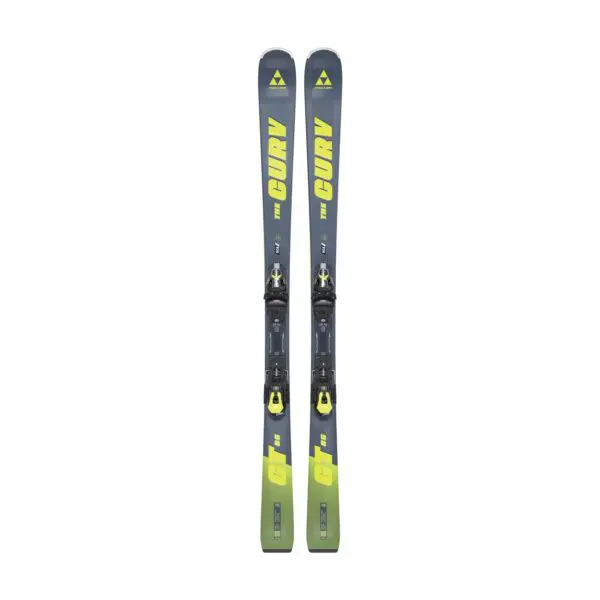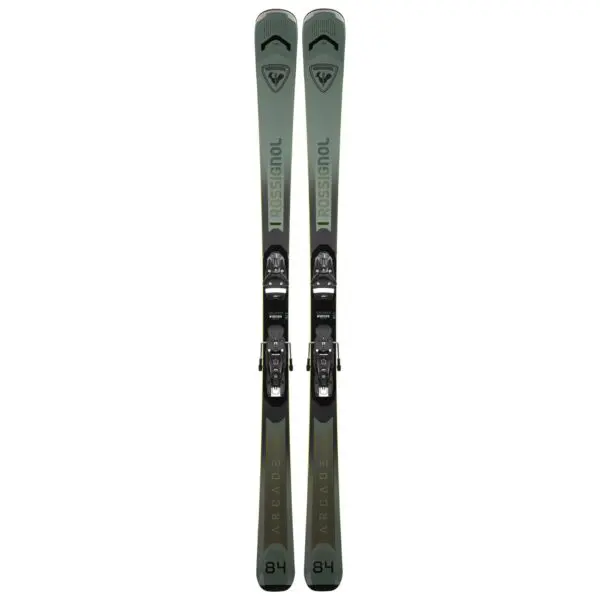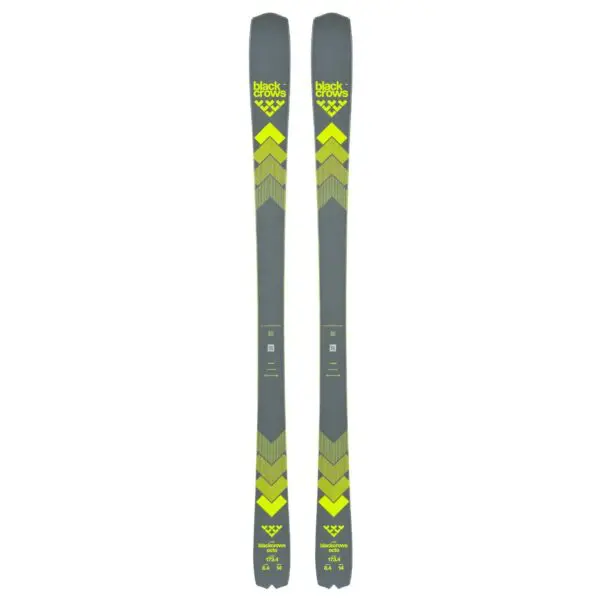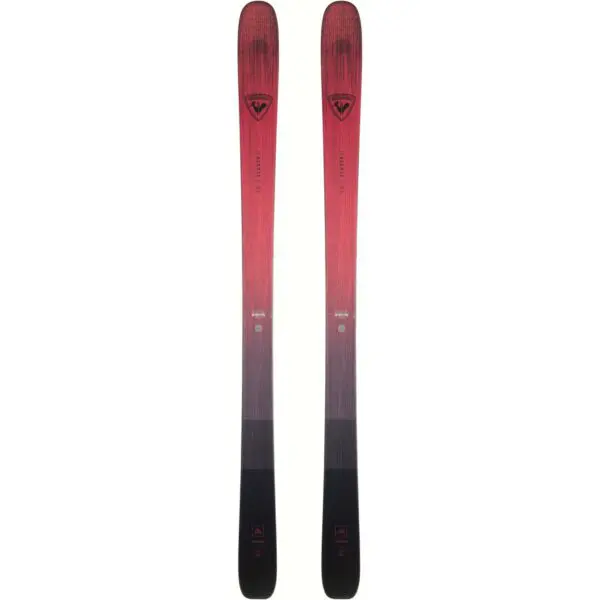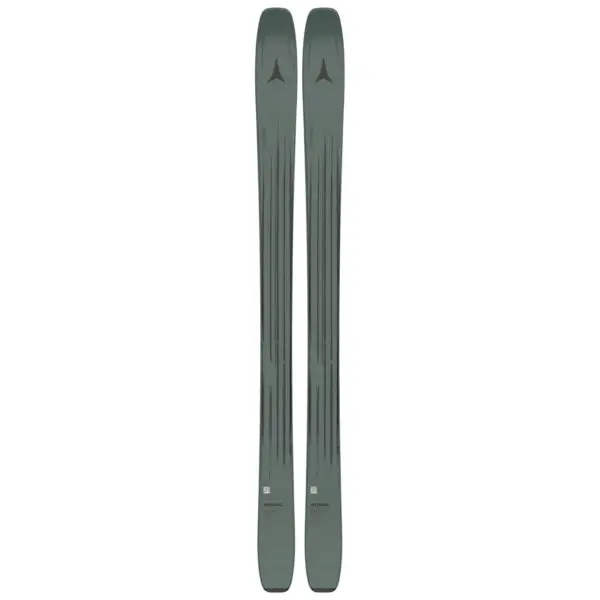Home / Shop / Ski Equipment / Skis / Blizzard Anomaly 88 + Marker Griffon 13 (2026)
Blizzard Anomaly 88 + Marker Griffon 13 (2026)
$2,199.80
gnomes V.I.P Club offers members special discounts on current season products. It’s free to join. Login or Register.
- Buy any ski + binding and get a FREE mount before shipping!
- Free shipping on orders over $299*
Description
Blizzard Anomaly 88 + Marker Griffon 13: SAVE $880!
Normally $2199.80, Special $1319.90
Ski: The Blizzard Anomaly 88 redefines all-mountain performance. Built for strong skiers wanting to improve their skills with stability and confidence across the whole mountain, the Anomaly 88 delivers precise edge hold and exceptional composure whether you’re carving groomers or charging through variable terrain. Its innovative FluxForm construction blends damping and power transfer without the added weight of a full Titanal layer, creating a ski that feels both strong and responsive. The result is a high-performance all-mountain ski that thrives everywhere yet stays intuitive and forgiving when you dial it back. For intermediate to expert skiers seeking dependable power with a refined, confidence-inspiring feel, the Anomaly 88 is the natural evolution of Blizzard’s legendary all-mountain DNA.
Bindings Included: Yes
Bindings: Marker Griffon 13
Type: All Mountain
Geometry: 127.5/88/109.5 @ 176cm
Radius: 16.5m @ 176cm
Weight: 2020/ski @ 176cm
Core
TrueBlend All Mountain Core – TrueBlend core of Beech and Poplar, tailor-made for each Anomaly model and each length.
Laminates
Two-Piece Upper Titanal Laminate for Grip and Stability – No longer a single sheet of Titanal, the Anomaly series uses a two-piece laminate with a sheet of fiberglass in between the layers. The upper layer of metal resembles the shape of the FluxForm Titanal layer in the Rustler skis and the second layer fills in the gap in the center. Lower Titanal Laminate – A full width Titanal laminate is placed under the core.
Sidewalls
Full Length ABS Sidewalls – Provide direct energy transfer under the bindings and precision during the turn.
Base
Binding: One of the most versatile freeride bindings out there, the Marker Griffon 13 has cemented its place as a go-to for so many skiers. With all the same tech as its bigger brother the Jester, they offer up durability, performance and consistent releases. The Triple Pivot Elite 3 toe works in tandem with the Inter Pivot 3 heel to bring a lighter weight, solid, performance-driven experience with improved power transmission and control. Sole ID gives you the option of running nearly any boot on the market, while the Anti-Ice rail up front lets you scrape snow and ice build-up before stepping in. The Griffon has got you covered.
Din: 4 – 13
Norm: Sole ID
Safety: TUV Certified
Weight: 2060g/pair
Adjustment Range: 20mm
Stand Heights: 20mm / 24mm
Toe Elasticity: 30mm
Heel Elasticity: 16mm
Triple Pivot Elite Toe: The toe construction allows for impressive retention when freeriding. The spring in the toe is inserted horizontally and with a sole plate inclined by 5° it provides the higher energy absorption to reduce the risk of early release. The large supporting surface optimizes the power transmission and allows for great stresses and strains.
Inter Pivot 3 Freeride Heel: The third and newest generation completely redone: improved power transmission, energy absorption and vertical heel elasticity combined with an improved step in comfort.
Sole I.D.: Height-adjustable gliding plate to be compatible with alpine (ISO 5355), touring (ISO 9523) and GripWalk soles. Easy to adjust: pozi screw at the front to adjust height of gliding plate.
Anti Ice Rail: Use the metal rail to scratch off ice and snow below your boot sole.
AFD Gliding Plate: Equipped with a moveable AFD (anti friction device) supporting a precise release almost entirely unhindered by dirt, snow and ice! Individual adjustment of the AFD to the area of application enhance optimized functionality.
Ability Levels:
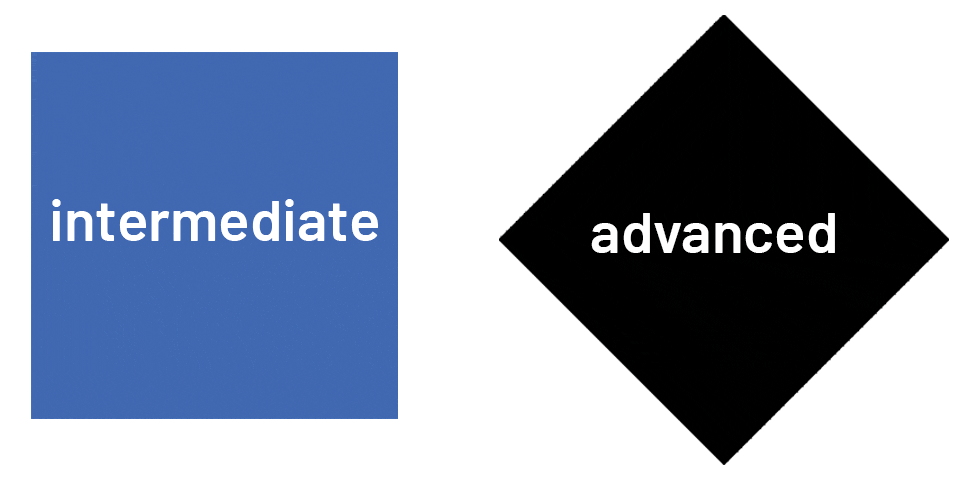
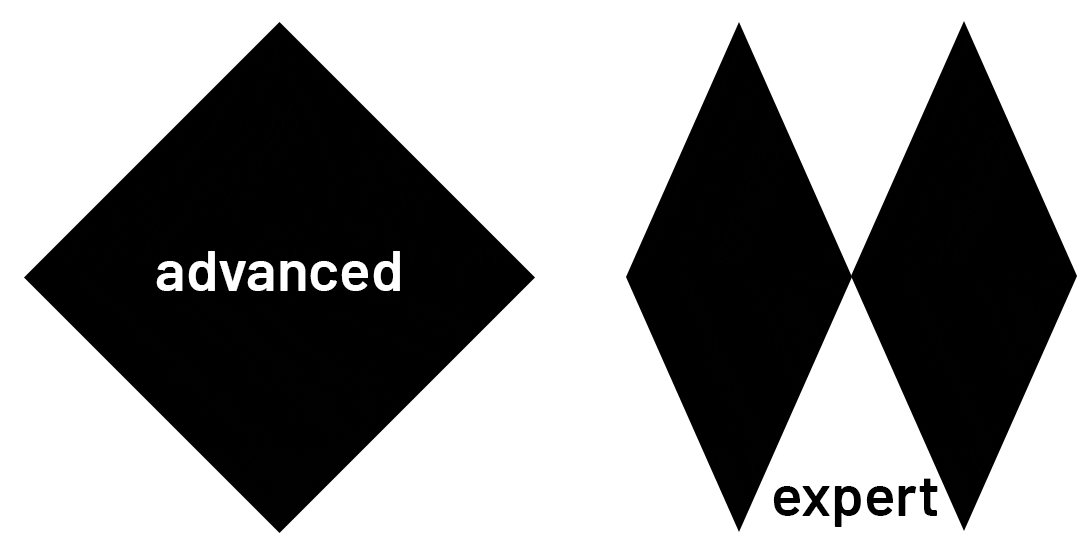
We can help you to find the ski(s) that are best suited to your ability and the places you like to ski. Complete our Ski Finder and we’ll get back to you with some expert advice.
Related Gear
We are a team of passionate skiers, our lives are entangled in a world of snow, mountains & ski paraphernalia. Take a look at how we can help you.
-
Sale!

Blizzard Anomaly 94 ’26 (Ex-Demo)
$2,299.90Original price was: $2,299.90.$1,299.90Current price is: $1,299.90. -
Sale!

Atomic Maverick 88 Ti + Strive 14 Package
$1,849.90
$1,109.90Save 40% -
Sale!

Fischer The Curv GT 85 + RSW 12 ’26 (Ex-Demo)
$1,999.90Original price was: $1,999.90.$1,099.90Current price is: $1,099.90. -
Sale!

Rossignol Arcade 88 + SPX 12 (2026)
$1,749.90
$1,312.90Save 24% -
Sale!

Rossignol Arcade 84 + NX 12 (2026)
$1,549.90
$1,162.90Save 24% -
Sale!

Atomic Maverick 88 CTI (2026)
$1,399.90
$1,049.90Save 25% -
Sale!

Black Crows Octo (2025/2026)
$1,599.90
$1,199.90Save 25% -
Sale!

Rossignol Sender 94 (2025)
$1,249.90
$749.90Save 40% -
Sale!

Atomic Maverick 96 CTI ’26 (Ex-Demo)
$1,999.90Original price was: $1,999.90.$1,199.90Current price is: $1,199.90.
Ski buying guide
Skis come in many different types, shapes and sizes and are designed for a wide range of abilities and terrain. Maximise your enjoyment on snow by using the guide to help you select the perfect ski.
Beginner – Intermediate

This level covers new skiers that are getting to grips with the basics through to those who are cruising around the slopes linking turns top to bottom. Skiing predominantly on the groomed/prepared trails. This gear is more forgiving and encourages good progression to the next level.
Intermediate – Advanced
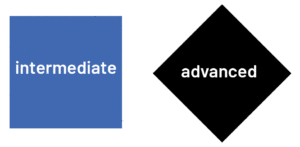
A majority of skiers fit into this level. These skiers can carve a good turn on the groomers as well as ski steeper freeride terrain or powder. This ability can ski with good speed and finesse in most snow types. The gear suited for this level can be pushed but is unlikely to be punishing if technique is off or a more chilled approach is taken.
Advanced – Expert
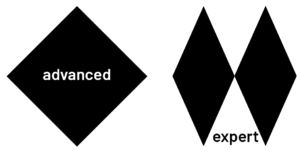
Experienced skiers that have an aggressive ski style and demonstrate a higher level of technique whether on groomed runs or the steepest chutes on the mountain. These skiers demand stronger equipment that is performance focused, usually stiffer and requires more input to get the most out of it.
Skis fall under different categories. The snow type or terrain you spend most of your time skiing on determines which ski would suit you the best. We have defined each ski category below to help you understand what ski you should be looking for.
Carving Skis
Also referred to as piste skis, groomer skis or frontside skis. Carving skis are built to arch turns on prepared trails. They are typically narrower, around 70-80mm underfoot and have a nimble and quick edge-to-edge feel. Carving skis are constructed to hold and edge on firm and icy snow. Everyone should own a carve ski, it’s a good skill to have, from beginners to experts.
All-Mountain Skis
All Mountain skis share a lot of characteristics to a carve ski but usually with a slight wider waist width. All-mountain skis are better suited to someone that likes the feel of carving but heads off trail on occasions. The wider geometry under foot, helps in unprepared snow.
Freeride Skis
Freeride skis usually start around 90mm in the waist. The wider body helps with stability on ungroomed snow. Freeride skis tend to float better in powder and are easier to pivot (skid turn) thanks to longer and deeper rocker lines. A longer radius helps eliminate a catchy or grabby feel when in variable snow.
Freestyle Skis
These skis are developed for skiers looking for a playful feel. Freestyle skis are designed to perform tricks in the air or off features. The skis are designed with turned up tails (twin tips) that allow the skier to land backwards (switch/fakie). The tips and tails are often softer to help with absorbing landings, but also give good rebound or pop.
Backcountry/Touring Skis
Backcountry skis are designed with some degree of uphill in mind, and lighter weight being the top factor. Backcountry skis come in a broad spectrum of waist widths and even different weights. Super light for uphill focus and medium weight for all round performance.
Powder Skis
Powder skis boast the fattest of waist widths, usually 110mm+. They have extremely deep and long rocker lines for maximum float in soft snow. They totally excel in deep untracked snow, perfect for Heli skiing, powder days or overseas skiing.
Race Skis
Race skis are the ultimate in performance, designed to be skied on the firm groomed trails at high speeds. The edge hold on a race ski is second to none, due to its solid construction. They require a very aggressive and technical skier to be able to control them.
The ski waist width (underfoot measurement) is one of the most crucial numbers when selecting skis. This measurement corresponds to the terrain/snowpack you will be most likely skiing on. A wider waisted ski is better for flotation in soft snow but can be harder to manage on firm conditions. A narrow waist ski offers quick edge-to-edge performance, but less stability in rough conditions.
60-79mm
These dimensions under foot are best for the skier that is dedicated to skiing on groomers and usually on firmer snow. The narrow waist offers quick edge-to-edge response and better power transfer that delivers higher levels of edge hold on ice. Best for aggressive on-trail skiers looking for high angle carving.
80-89mm
This waist range offers more stability to the ski. The extra width acts as a stable platform when the snow gets a little rough or cut-up on groomers. It shines on firm snow and is best for groomer skiers.
90-99mm
This is at the narrower end of the freeride skis. These skis offer the most versatility in the fact they can handle carving medium turns on-trail and are just as happy skiing off-trail in untracked snow, bumps, and steeps. When the snow is deep, a wider ski surfs much better.
100-109mm
Wider freeride skis offer more flotation in deep snow, plus the extra width provides maximum stability when charging through rough unprepared terrain at speed.
110mm+
This width is designed for the skier that spends all their time freeriding in soft snow. They are harder to manage on firmer groomers and often have longer radii. This wide platform is the ultimate for flotation in deep powder and keeps the skier on the surface.
There are many different factors to consider when selecting the correct ski length. Height and weight are a good starting point but many other considerations need to be taken into account. Like the typeof ski you are buying, the rocker profile of the ski, the snow conditions you aim to ski on, and your ability level.
Carving skis typically have a shorter turn radius and are designed to be skied in shorter lengths. All-mountain skis have a slightly wider waist width and are designed to be skied a little longer than carving skis for added stability in variable terrain. Freeride and backcountry skis are designed to be skied between eye and head height depending on rocker profile.
Reasons to go shorter:
• You are lighter than average for your height
• You prefer shorter turns
• You ski on-trail most of the time
• You are not an aggressive or fast skier
Reasons to go longer:
• You ski hard and fast
• You prefer longer turns
• Your weight is above average for your height
• You ski off-trail in variable conditions
• You are looking at a ski with a long rocker profile

Radius: The radius defines the turning shape of the ski. E.g. a short radius is around 11m, a medium 17m and long radius is around 21m. A short radius means the ski will turn quicker, fun on groomers. A longer radius is better in variable terrain as it won’t hook-up and grab making it more predictable.
Pivot: To turn/maneuver the ski in a skidding motion
Charger: Has a stable feel at high speeds, supportive with long effective edge. Tracks perfectly.
Playful: Fun and poppy. Good for freestyle and softer snow.
Damp: Composed at speed on firm snow, quiet in terms of micro movements. E.g. a metal laminate ski is damp, a light-weight core ski is not damp.
Directional: Skiing in a forward direction with a carving inspired stance. Doesn’t ski switch or freestyle.
Variable Snow: A mix of hard and soft snow. Can be grabby and unpredictable to ski through.
Taper: The widest point of the ski tip and tail is brought closer to the centre. Taper reduces a catchy/hooky feel laying the ski over, but on flip side loses some of the carvability.
Sidewall: Sidewall construction is a traditional style of building skis, it’s the strongest, offering more power to the edges, torsional strength, and more robustness.
Titanal: Often referred to as “Ti” or metal. Titanal is a alloy mix used in some ski construction to make the skis more damp and stable. Hardly any skis on the market are made from Titanium.
Are you still unsure of which ski to choose? We can help you to find the ski(s) that are best suited to your ability and the places you like to ski. Complete our ski finder form and we’ll get back to you with some expert advice.






